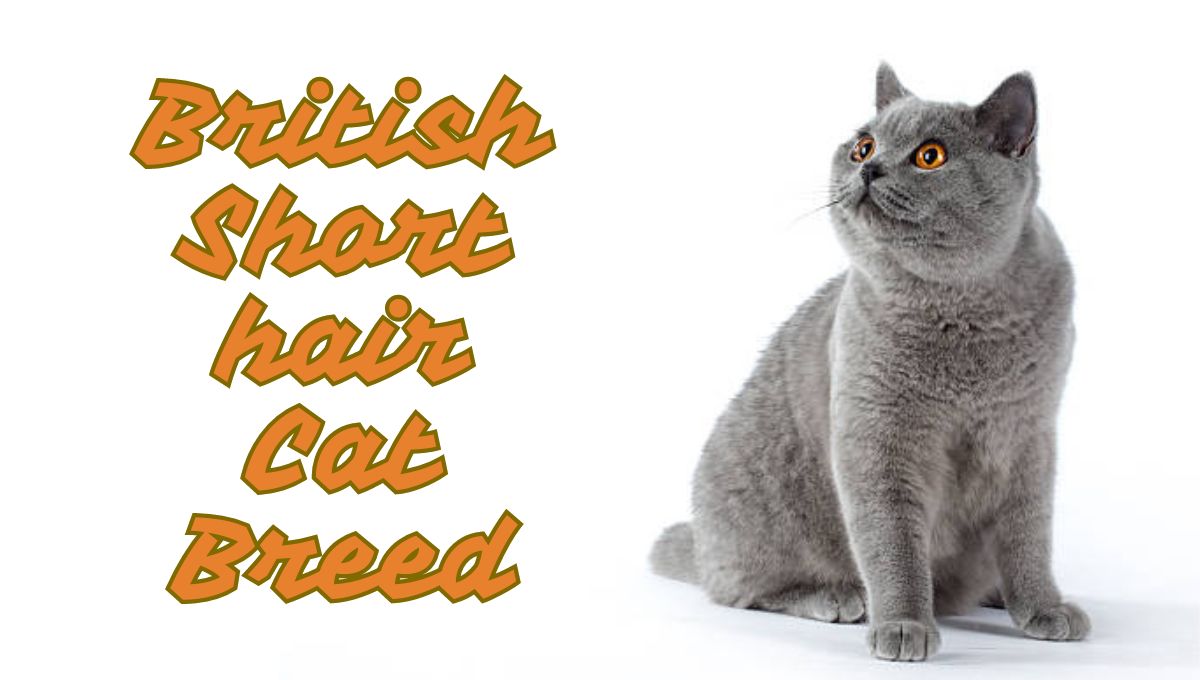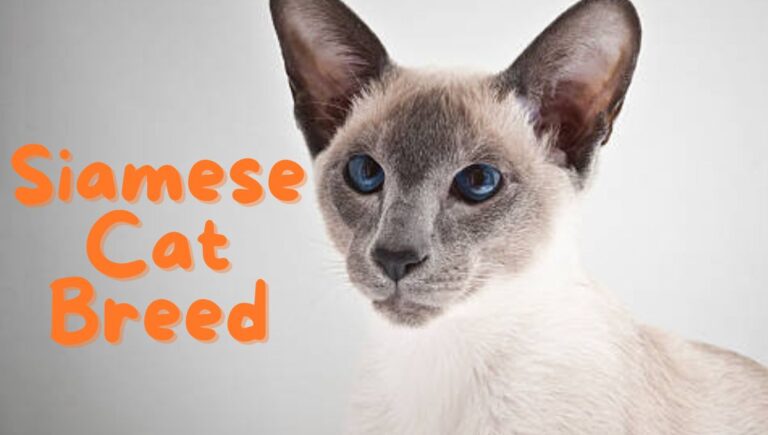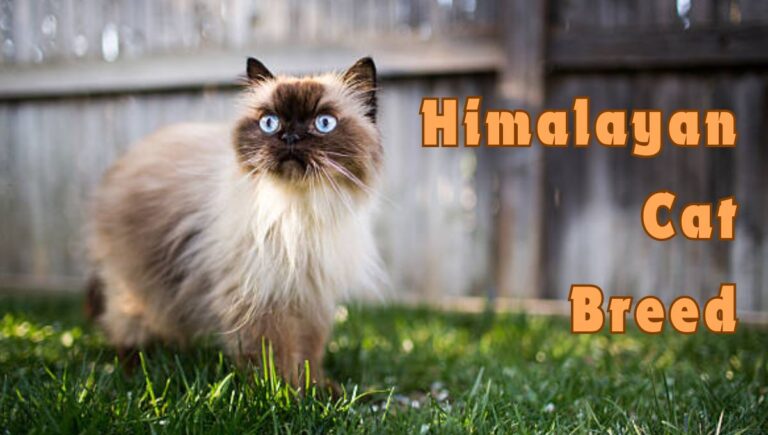British Shorthair Cat Breed
The British Shorthair cat breed, known for its distinctive appearance and charming demeanor, is one of the oldest and most popular cat breeds in the world. Renowned for its round face, large round eyes, and dense, plush coat, the British Shorthair exudes a teddy bear-like charm that is hard to resist. This breed is celebrated not only for its striking looks but also for its calm and easygoing nature, making it an ideal companion for families and individuals alike.

British Shorthairs are medium to large-sized cats, with strong, muscular bodies and a sturdy build. Their coat, which comes in a variety of colors and patterns, is thick and requires minimal grooming compared to long-haired breeds. Despite their plush fur, British Shorthairs are known for their low-maintenance grooming needs, adding to their appeal as a pet.
What sets the British Shorthair apart is its balanced personality. These cats are typically affectionate but not overly demanding, enjoying the company of their human companions without being overly clingy. They are generally good with children and other pets, making them versatile and adaptable to various household environments. Their intelligence and playful yet independent nature make them a delightful addition to any home, offering both companionship and entertainment.
Table of Contents
I. Origin and History of British Shorthair Cat Breed :
Origins and Historical Significance:
- Ancient Roots: The British Shorthair is believed to have descended from cats brought to Britain by Roman invaders around 2,000 years ago. These cats interbred with native wildcats, contributing to the breed’s robust and sturdy nature.
- Role of Breeding: During the 19th century, British cat fanciers began selectively breeding these cats to develop their distinctive features, leading to the establishment of the British Shorthair as a recognized breed.
Geographical Region of Origin:
- United Kingdom: The British Shorthair originated in the United Kingdom, where it has become one of the most popular and iconic cat breeds.
Influence on Characteristics Today:
- Physical Traits: The breed’s origins have resulted in its muscular build, dense coat, and round face, all traits that were likely advantageous for survival in the British climate.
- Temperament: The historical need for these cats to be effective hunters and companions has influenced their calm, affectionate, and adaptable nature.
Folklore and Legends:
- Fairy Cats: In British folklore, the British Shorthair has been associated with the mystical “fairy cats,” believed to bring good luck and protect homes from evil spirits.
- Symbol of Good Fortune: Throughout history, British Shorthairs have been considered symbols of good fortune and prosperity, often kept as treasured pets in households across Britain.
The rich history and cultural significance of the British Shorthair have shaped it into a breed that embodies both resilience and charm, making it a beloved pet with a unique blend of physical and personality traits.
II. Physical Characteristic of British Shorthair Cats :
| Height | British Shorthair cats typically stand around 12-14 inches tall at the shoulder. |
| Weight | Males: 12-18 pounds, Females: 8-14 pounds |
| Life Span | British Shorthairs generally live between 12-20 years. |
| Good With | These cats are good with children, other cats, and even dogs, making them excellent family pets. |
| Temperament | Calm, easygoing, and affectionate without being overly demanding. |
| Intelligence | Highly intelligent, capable of learning tricks and solving puzzles. |
| Shedding Amount | Moderate shedder; regular grooming helps manage shedding. |
| Grooming | Low to moderate grooming needs due to their dense, plush coat. |
| Exercise Needs | Moderate; they enjoy playtime but are also content with a more relaxed lifestyle. |
| Energy Level | Moderate energy level; they are playful but also enjoy lounging. |
| Meowing Level | Typically quiet; British Shorthairs are not known to be very vocal. |
| Drool amount | Minimal drooling. |
| Coat Length/Texture | Short, dense, and plush coat with a crisp texture. |
| Colors | British Shorthairs come in a wide variety of colors, including blue (most common), black, white, red, cream, and more. |
| Patterns | They can have various patterns, including solid, tabby, bicolor, and more. |
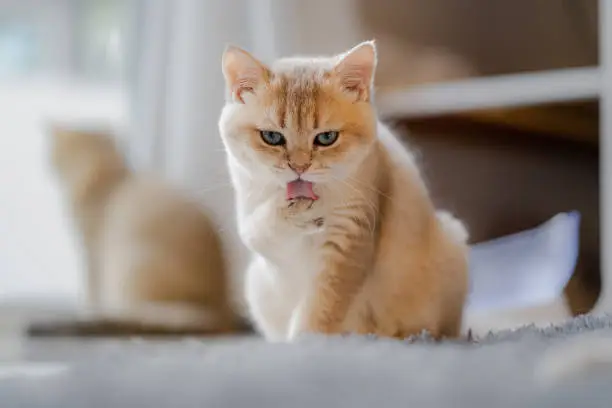
Detailed Physical Characteristics of British Shorthair Cat Breed
Size:
- Males: Typically weigh between 12-18 pounds and stand around 12-14 inches tall at the shoulder.
- Females: Generally weigh between 8-14 pounds and have a similar height range as males, standing about 12-14 inches tall.
Coat Type and Colour Variations:
Coat Texture and Length:
- The British Shorthair has a short, dense, and plush coat with a crisp texture. The coat’s density gives it a luxurious, velvety feel.
Colour Variations:
- The breed comes in a wide array of colors. The most famous and iconic is the “British Blue,” a solid blue-gray color. Other solid colors include black, white, red, cream, and chocolate.
- The breed also exhibits various p
- Tabby: Striped, spotted, or classic (swirled) patterns in various colors.
- Bicolor: Combination of white with another color.
- Tricolor/Calico: Typically females, displaying patches of black, orange, and white.
- Colorpoint: Lighter body with darker extremities (similar to Siamese cats).
Distinctive Features:
Ear Shape:
- British Shorthairs have medium-sized ears that are rounded at the tips and set wide apart, contributing to their round-faced appearance.
Tail Characteristics:
The tail is thick and medium in length, tapering to a rounded tip, which complements their robust body structure.
Unique Physical Traits:
- Round Face and Eyes: One of the most distinguishing features of the British Shorthair is its round face with full cheeks and large, round eyes that can be copper, blue, green, or gold, depending on the coat color.
- Sturdy Build: These cats have a strong, muscular build with a broad chest and solid legs, giving them a sturdy, well-balanced appearance.
- Expression: Their gentle and sweet expression, combined with their plush coat and solid frame, sets them apart from other breeds and enhances their teddy bear-like charm.
III. Temperament and Personality of British Shorthair Cats :
Typical Temperament and Personality Traits:
- British Shorthairs are known for their calm and easygoing nature. They are typically laid-back and enjoy a serene environment.
- These cats are affectionate but not overly demanding of attention. They enjoy being close to their human companions but are content with their own company as well.
- British Shorthairs are generally very friendly and sociable. They tend to get along well with children, other cats, and even dogs, making them great family pets.
- Their intelligence and playful nature make them enjoyable companions, though they do not require constant stimulation or activity.
General Demeanour:
- British Shorthairs have a dignified and gentle demeanor. They are not prone to high levels of activity or excessive vocalization.
- These cats are known for their quiet, calm presence and are usually not prone to destructive behavior.
Common Behavioural Traits:
Positive Traits:
- Affectionate and loving towards their families.
- Tolerant and patient with children and other pets.
- Adaptable to various living environments, whether a busy household or a quiet home.
- Intelligent and capable of learning tricks and commands.
Challenging Traits:
- Can be somewhat reserved with strangers until they feel comfortable.
- May become overweight if not given proper diet and exercise due to their less active nature.
Managing and Addressing Breed-Specific Behavioural Issues:
Encouraging Socialization:
To help British Shorthairs feel comfortable with new people and situations, gradual socialization and exposure are key. Allow them to approach new experiences at their own pace.
Preventing Obesity:
Monitor their diet and provide regular playtime to ensure they maintain a healthy weight. Interactive toys and puzzles can help keep them active and mentally stimulated.
Providing a Calm Environment:
British Shorthairs thrive in a calm and stable environment. Minimize sudden changes and loud noises to keep them comfortable and stress-free.
Respecting Their Independence:
While they enjoy companionship, it’s important to respect their need for personal space. Provide cozy spots where they can retreat and relax undisturbed.
Overall, the British Shorthair’s balanced temperament and friendly nature make them an ideal companion for many households. Proper care, understanding, and attention to their specific needs will ensure a happy and healthy life for these charming cats.

IV. Care and Maintenance of British Shorthair Cat Breed :
Grooming Needs :
- Brushing: Despite their short coat, British Shorthairs have dense fur that benefits from regular brushing. Brushing once a week is usually sufficient to remove loose hairs and prevent matting.
- Bathing: Bathing is rarely necessary unless the cat gets particularly dirty. Their coats are naturally resistant to dirt.
- Nail Trimming: Regular nail trimming every few weeks helps prevent overgrowth and related issues.
- Ear Cleaning: Check and clean their ears regularly to avoid buildup of wax and debris.
- Dental Care: Regular dental hygiene, such as brushing their teeth and providing dental treats, helps prevent dental disease.
Health Consideration :
- Regular Vet Check-ups: Routine veterinary visits are essential for monitoring their overall health and catching any potential issues early.
- Vaccinations and Preventatives: Ensure they are up-to-date on vaccinations and preventative treatments for parasites.
- Common Health Issues: British Shorthairs can be prone to certain genetic conditions, such as hypertrophic cardiomyopathy (HCM) and polycystic kidney disease (PKD). Regular health screenings can help detect these issues early.
- Weight Management: Due to their less active nature, British Shorthairs can be prone to obesity. Monitoring their diet and encouraging regular exercise is crucial for maintaining a healthy weight.
Nutrition :
- Balanced Diet: Provide a high-quality, balanced diet that meets their nutritional needs. This includes a mix of wet and dry food formulated for their age, size, and activity level.
- Portion Control: Measure their food to prevent overeating and adjust portions based on their activity level and weight.
- Hydration: Ensure they have access to fresh water at all times. Some British Shorthairs may prefer drinking from a cat fountain.
- Special Dietary Needs: Consult with a veterinarian to determine if they need any specific dietary supplements or restrictions based on their health status.
Exercise :
- Moderate Activity: British Shorthairs are not as active as some other breeds, but they still enjoy playtime. Interactive toys, laser pointers, and puzzle feeders can encourage physical activity and mental stimulation.
- Play Sessions: Engaging them in short play sessions throughout the day helps keep them active and healthy. Toys that mimic hunting behavior, such as feather wands, are particularly effective.
- Climbing Opportunities: Providing cat trees or shelves can encourage them to climb and explore, aiding in their exercise routine.
By understanding and addressing the grooming, exercise, health, and nutritional needs of British Shorthair cats, owners can help ensure their pets lead happy, healthy, and fulfilling lives.
V. Suitability of British Shorthair Cats :
Compatibility with Children and Other Animals:
Interactions with Kids:
- British Shorthairs are known for their gentle and patient nature, making them excellent companions for children. They typically tolerate handling well and are not prone to scratching or biting.
- These cats enjoy playtime with kids but also appreciate calm, quiet moments. It’s important to teach children how to interact respectfully with the cat to ensure positive experiences for both.
Tolerance for Other Pets:
- British Shorthairs generally get along well with other pets, including other cats and dogs. Their calm demeanor and lack of aggression make them adaptable to multi-pet households.
- Introductions should be done gradually to allow the British Shorthair to adjust and feel comfortable with new companions.
Special Considerations for Multi-Pet Households:
Gradual Introductions:
- When introducing a British Shorthair to existing pets, do so gradually. Start by allowing them to sniff each other through a door or gate before progressing to supervised face-to-face interactions.
- Use positive reinforcement, such as treats and praise, to encourage calm and friendly behavior during introductions.
Creating Safe Spaces:
- Ensure that the British Shorthair has access to safe, quiet spaces where they can retreat if they feel overwhelmed. This is particularly important in busy households with multiple pets.
- Providing separate feeding areas and litter boxes can help reduce stress and territorial issues.
Environmental Needs:
Space Requirements:
British Shorthairs do not require vast amounts of space but appreciate having areas to explore and climb. Cat trees, shelves, and window perches can provide enrichment in smaller living spaces.
Special Environment Considerations:
They thrive in a calm and stable environment. Sudden changes or loud noises can cause stress, so maintaining a routine and providing a quiet, secure space is beneficial.
Temperature Preferences:
British Shorthairs adapt well to most indoor environments. They prefer a moderate climate and may seek out warm spots to nap during colder months. Ensure they have access to cozy beds and blankets.
Settling into Home Environment:
British Shorthairs generally settle well into home environments with proper introductions and adjustments. They are adaptable and can thrive in both apartments and houses, as long as their basic needs for stimulation and comfort are met.
Overall, the British Shorthair’s gentle temperament and adaptability make them a suitable choice for families with children and other pets. By considering their specific needs and ensuring a supportive environment, owners can provide a harmonious home for these charming cats.
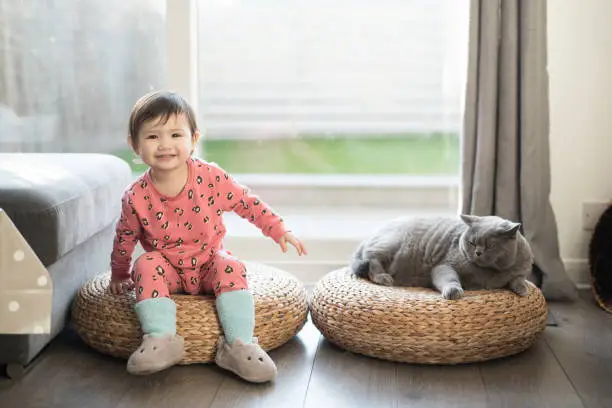
VI. Adoption and Breeder Consideration of British Shorthair Cat Breed :
Encourage Adoption from Shelters or Rescue Organizations:
- Adopting a British Shorthair from a shelter or rescue organization provides a loving home to a cat in need. Many wonderful cats are waiting for adoption, including purebreds and mixes.
- Adoption helps reduce the number of cats in shelters and supports the rescue efforts of these organizations. It’s also often more affordable than purchasing from a breeder.
Guidance on Selecting a Reputable Breeder:
Importance of Ethical Breeding Practices:
- If choosing to purchase a British Shorthair from a breeder, it’s crucial to select a reputable breeder who prioritizes the health and well-being of their cats.
- Ethical breeders conduct health screenings to ensure their cats are free from genetic diseases. They provide proper care, socialization, and a clean, safe environment for their cats and kittens.
Research and Questions:
- Research breeders thoroughly, looking for reviews and recommendations. Ask for references from previous buyers.
- Visit the breeder’s facility to see the living conditions of the cats. Ask about health guarantees, vaccination records, and the breeder’s experience with the breed.
Cost Considerations and Potential Adoption Fees:
Adoption Fees:
Adoption fees for British Shorthairs from shelters or rescue organizations typically range from $50 to $200, depending on the cat’s age, health, and location. This fee often includes spaying/neutering, vaccinations, and a basic health check.
Purchasing Costs:
- Purchasing a British Shorthair from a reputable breeder can be significantly more expensive, often ranging from $800 to $2,000 or more, depending on pedigree, show quality, and other factors.
- Additional costs to consider include initial veterinary visits, vaccinations, spaying/neutering, and supplies such as food, litter, and toys.
Ongoing Expenses:
- Consider the long-term costs of owning a British Shorthair, including regular veterinary care, food, grooming supplies, and potential health issues as the cat ages.
Adopting or purchasing a British Shorthair requires careful consideration and preparation. Whether adopting from a shelter or purchasing from a breeder, it’s essential to ensure that you are ready to provide a loving, responsible home for this wonderful breed. By making informed decisions, you can enjoy a rewarding and fulfilling relationship with your British Shorthair cat.
VII. Conclusion
The British Shorthair cat breed is distinguished by its robust, muscular build and dense, plush coat, which can come in a variety of colors and patterns. Known for their round faces, large eyes, and calm demeanor, these cats are both visually striking and wonderfully affectionate. Their temperament is typically gentle and friendly, making them excellent companions for families with children and other pets. They are intelligent and relatively low-maintenance, although they do enjoy interactive play and mental stimulation.
Responsible ownership is crucial when it comes to the British Shorthair. Regular grooming, a balanced diet, and routine veterinary care are essential to ensure they lead healthy, happy lives. Potential owners should be aware of the breed’s susceptibility to certain genetic conditions, like hypertrophic cardiomyopathy, and seek out reputable breeders or adoption sources that prioritize health screenings. Additionally, maintaining a stable and enriched home environment will help these cats thrive, as they enjoy both affection and independence.
Before bringing a British Shorthair into your home, it’s important to consider all aspects of their care and the commitment involved. Ensuring you can meet their physical, emotional, and health needs will pave the way for a rewarding relationship with this charming and dignified breed.

FAQ about British Shorthair Cat Breed :
What is the typical lifespan of a British Shorthair cat?
British Shorthairs typically live between 12 to 20 years, with proper care and regular veterinary check-ups.
Do British Shorthair cats get along with other pets?
Generally, British Shorthairs get along well with other cats and dogs, especially if they are introduced properly and gradually.
How big do British Shorthair cats get?
Male British Shorthairs typically weigh between 9 to 17 pounds, while females weigh between 7 to 12 pounds. They have a robust and muscular build.
How much does it cost to adopt or purchase a British Shorthair cat?
Adoption fees from shelters typically range from $50 to $200, while purchasing from a reputable breeder can cost between $800 to $2,000 or more, depending on the cat’s pedigree and quality.

